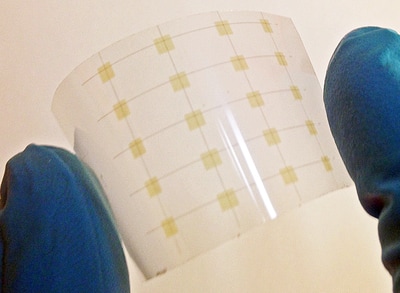In work recently published in Nature Nanotechnology, a group of scientists from the Universities of Manchester and Pisa demonstrated a simple way of engineering water-based 2D material inks. Using the new strategy, multi-stack fabrication was also achievable enabling the demonstration of all-inkjet-print heterostructure-based devices. The examples provided were arrays of photosensors printed on plastic and paper as well as programmable logic memory devices. A further step was taken to confirm biocompatibility to extend the use of these inks in biomedical applications.
With these promising results, Cinzia Casiraghi and Kostas Kostarelos, who have both been involved in this project, hope to transfer this technology into healthcare. Their research in Theme II of 2D-Health will be based around the design and use of Graphene-based 2D inks that can be used to track cell populations non-invasively when administered in cell therapy protocols. If successful, this would have a major impact on target delivery and diagnostics for research in many areas such as ocular and cardiovascular diseases.

